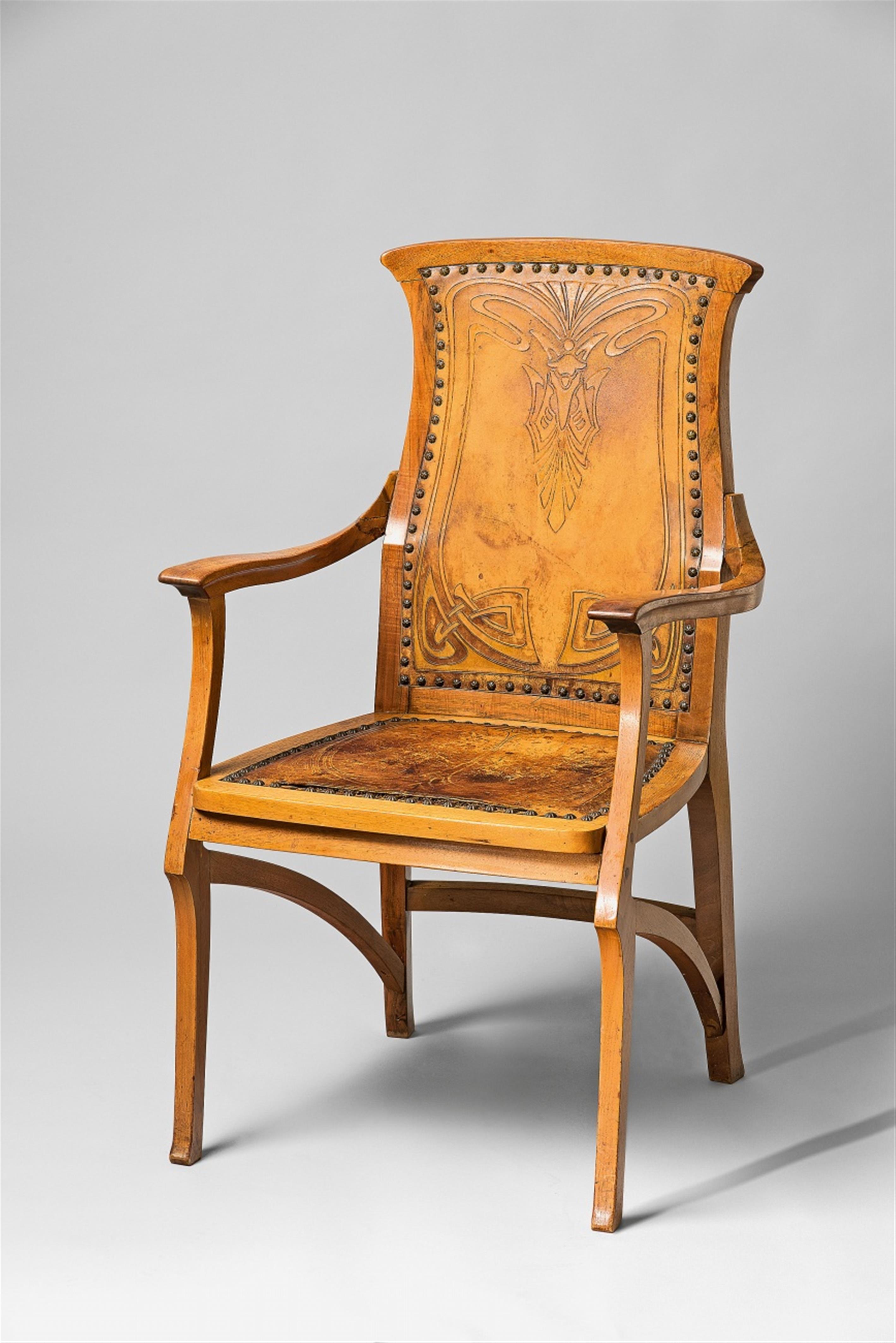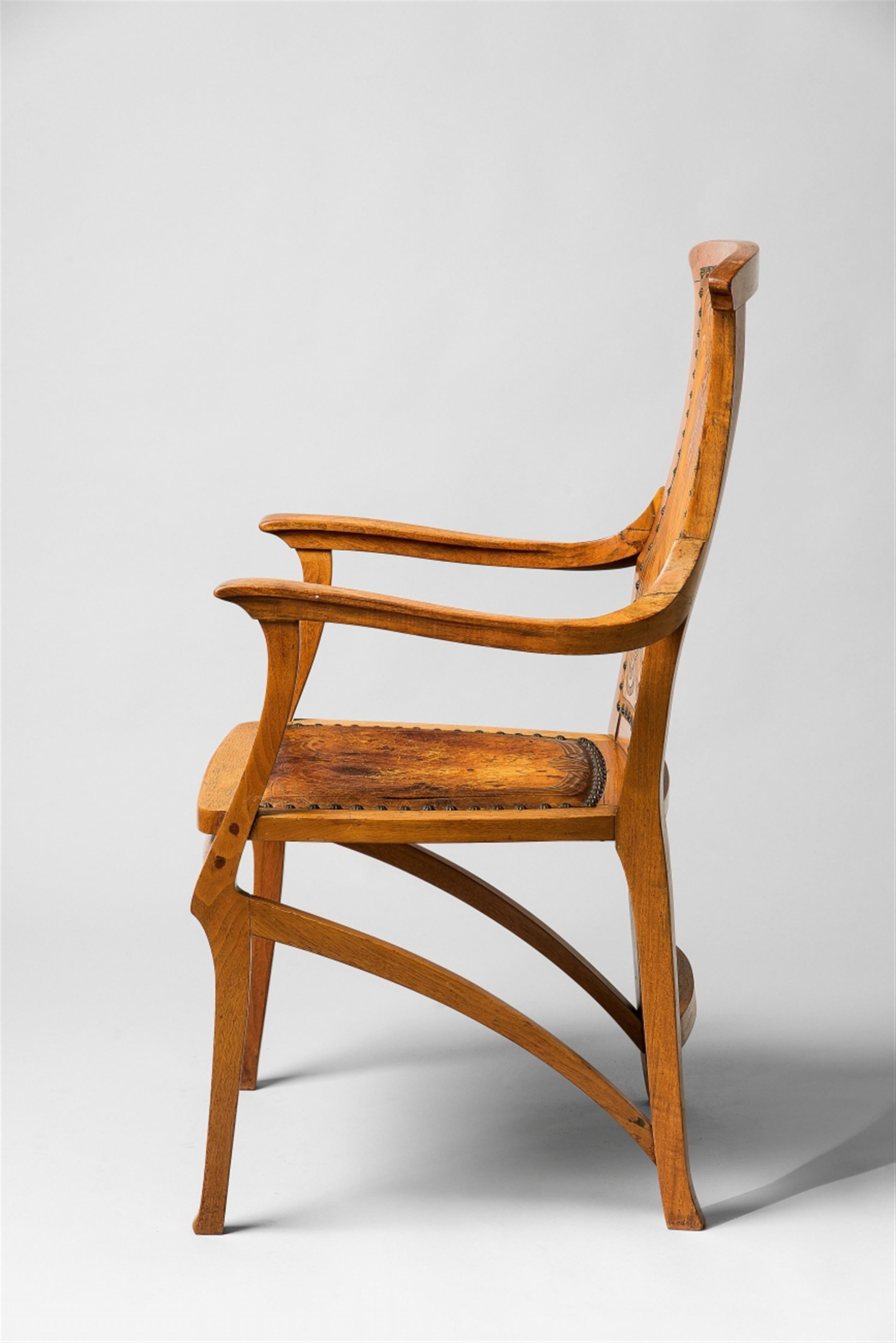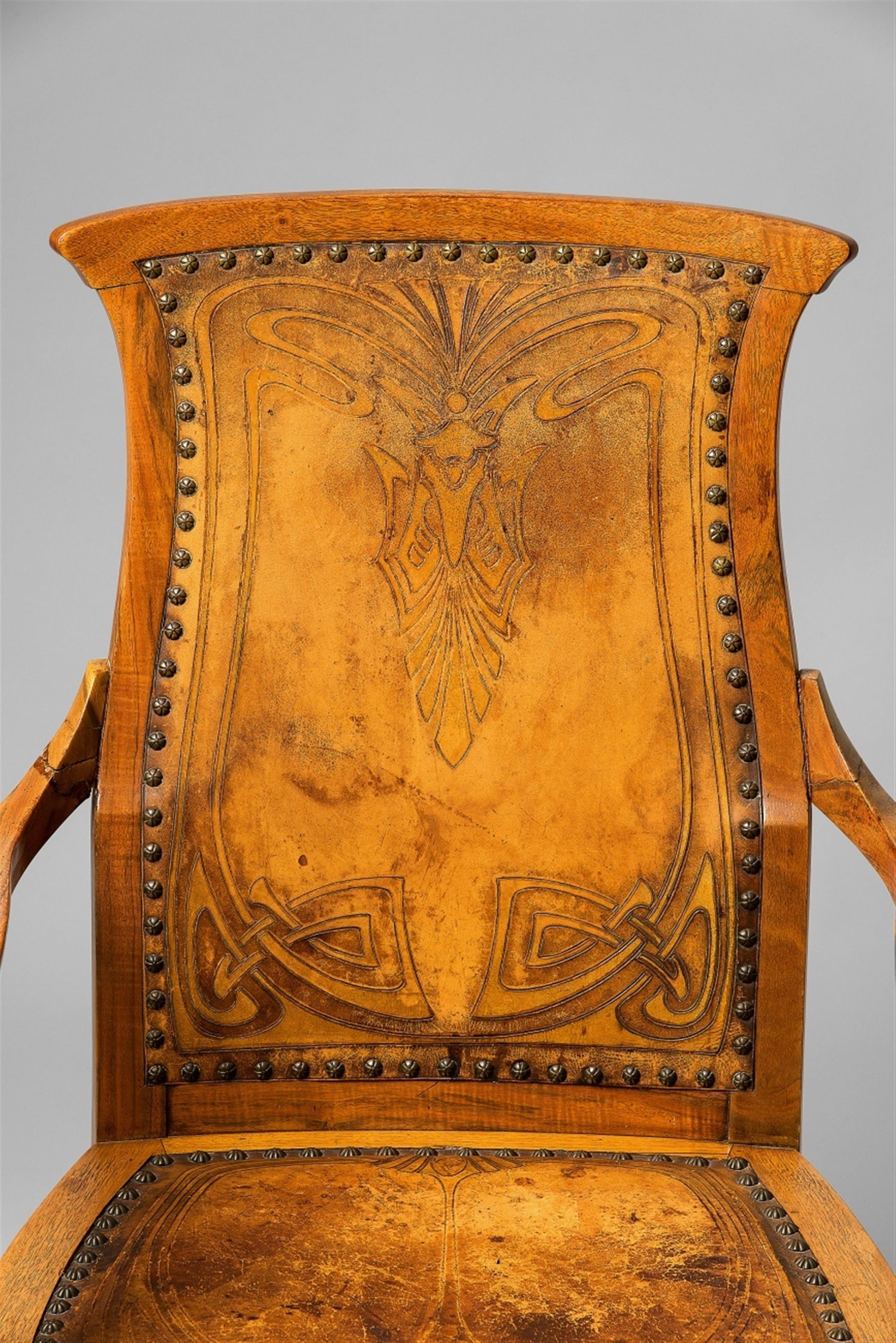A hardwood fauteil after a design by Henry van de Velde
Possibly limewood, embossed leather, brass studs. Of identical design (but not identical facture) to the model in the Munich Secession Exhibition of 1899. Curved back legs continuing to form the backrest, the front legs curving over to form the arms. The apron connected to the front legs with dowels, the seat, arms, and back panel also presumably connected with dowelled joints. Major signs of wear to the leather. The seat stabilised with a presumably later compressed wood panel to the underside. The connection between the arms and the backrest broken repeatedly, reattached, and still fragile. H 104.2, W 55.8, D 54.3 cm.
Designed by Henry van de Velde, 1898, authorised reproduction by Hermann Hirschwald of Berlin, after 1900.
According to Dr. Thomas Föhl, the present work is an example of a series of furniture produced and sold with van de Velde's authorisation by the merchant and factory owner Hermann Hirschwald of Berlin. Hirschwald may have first seen this piece at the Exhibition of the Munich Secession, where van de Velde presented it as part of a study ensemble, grouped together against a wall with the large writing desk now kept in the Germanisches Nationalmuseum in Nuremberg.
Hermann Hirschwald (Lauenburg 1849 - 1906 Berlin) founded his firm, the Hohenzollern-Kunstgewerbehaus in Leipziger Str. 13, Berlin, in 1878. In 1904, the magazine “Deutsche Kunst und Dekoration” published several articles about the firm's program and offers on occasion of its 25th anniversary in business its renovation by the architects Friedmann and Weber. Hirschwald was a great supporter of regional design, and organised several spectacular exhibitions, including one on modern women's clothing in 1902, another on the jewellery of René Lalique in 1903, and the products of the Wiener Werkstätte in 1904. He could boast the Crown Prince and the South Kensington Museum among his customers. The stairwell, cash registers, and packing tables of the Kunstgewerbehaus were all designed by van de Velde.
Certificate
We would like to thank Dr. Foehl, Klassik Stiftung Weimar, for kindly providing information on this work via telephone.
Provenance
Private ownership, Hamburg.
Literature
Illus. of this chair design in the study of the Secession Exhibition, in: Sembach, Henry van de Velde, Stuttgart 1989, p. 53.
For more information on the Hohenzollern-Kunstgewerbehaus, see: Kunst und Dekoration 15/1904 - 05, p. 169 ff.






